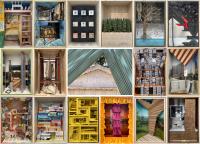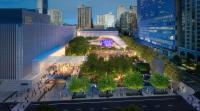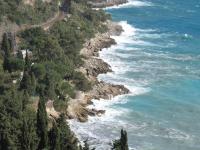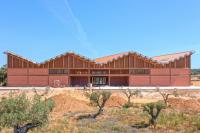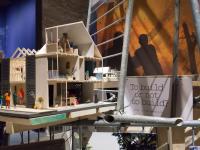Rheinsteg in Rheinfelden DE CH, Suspension Bridge with Timber Structure
Rheinfelden, Switzerland
Dimensions:
Length: ca. 213,50 m
Width: 4,50 m
Structure:
Suspension bridge including a horizontal timber structure made from a block laminated glulam. Steel towers with a "kink" in shape of an upside-down "Y". Decking made of large scale natural stone slabs. Steel railing designed with a handrail made from modified wood.
Object planning:
Leistungsphasen 1-9
Structure planning:
Leistungsphasen 1-6
(according to German HOAI)
The winning design was selected from entries submitted by eight shortlisted teams participating in the competition for a new link between the cities of Rheinfelden in the Swiss canton of Aargau and Rheinfelden in the German state of Baden. The two regions jointly launched a design competition last year calling for the construction of a 4.5m-wide and up to 250m-long bridge as a new link across the Rhine River for pedestrians and cyclists. The aim of the competition was to achieve a closer relationship between Rheinfelden Aargau and Rheinfelden Baden and to upgrade the eastern urban area.
The 30m-high steel towers are cranked just above deck level and they are a single element above the crank and split into two legs below it, each of which terminates in a pinned connection at ground level. This arrangement — combined with the length of the deck — requires supplementary cables in order to allow the slenderness of the towers, and for stability of the deck against vibrations. As well as the main cables which suspend the deck, each tower leg is tied back by a cable which connects between the crank point and the main cable anchors. Additional cables along each side of the deck provide stability and eliminate the need for transverse beams; they tie in to the hangers, which are at 10m centers, and to the deck at the same point.
In selecting the winning design, the judges highlighted the use of timber as the main construction material, since there is a long tradition of timber bridges in the area and timber is sustainable as well as innovative.
The good ratio of dead weight and load capacity makes the material very economical. The implementation of the horizontal timber structure will bound permanently approx. 550 ton CO2.
- Engineers
- Ingenieurbüro Miebach
- Location
- Flossländerweg, 4310 Rheinfelden, Switzerland
- Year
- 2017-2019
- Client
- Stadt Rheinfelden (Baden-DE), Stadt Rheinfelden (Aargau-CH)
- Architect
- swillus architekten, Berlin
- Landscape Design
- HHVH Landschaftsarchitekten, Berlin



